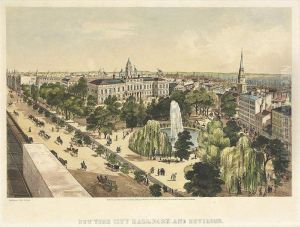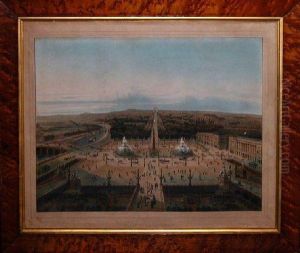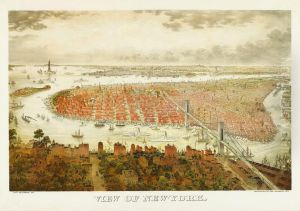John Bachmann Paintings
John Bachmann, also known as John Bachman, was a Swiss-born American artist and lithographer, renowned for his detailed panoramic views of American cities and landscapes during the 19th century. Born in Switzerland in 1814, Bachmann emigrated to the United States in the early 1840s, where he quickly became an integral part of the burgeoning American art scene. His work captured the rapidly changing urban and natural environments of America, offering a unique perspective on the development of the nation’s cities during a period of significant growth and transformation.
Bachmann's artistic career was characterized by his meticulous and innovative approach to the panoramic genre. He is particularly noted for his bird's-eye views, a style that presented cities from an elevated perspective, as if seen from a high vantage point. This technique allowed viewers to appreciate the architectural details and spatial arrangements of the urban landscape in a way that was unprecedented at the time. Among his most celebrated works are views of New York City, including a famous panoramic view of Manhattan in 1849, which is often cited for its detail and accuracy, capturing the bustling life of the city in the mid-19th century.
Throughout his career, Bachmann employed lithography, a printing process that allowed for high-quality reproductions of his works. This technology was crucial in disseminating his views to a wide audience, enhancing his reputation and influence. His panoramas were not only artistic achievements but also valuable historical documents, providing insight into the architectural and urban development of American cities during the 19th century.
Bachmann's contributions to American art and his unique portrayal of its cities have earned him a lasting place in the history of American art. He continued to work and influence the field until his death in 1896. Today, Bachmann's works are held in high esteem, collected by museums and art enthusiasts alike, as they continue to offer a fascinating window into the America of the past, seen through the eyes of a pioneering artist of his time.


